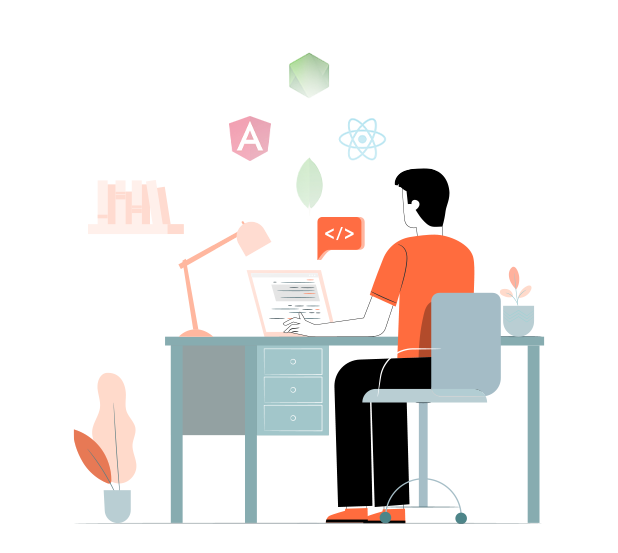Customers love products that are intuitive, and AI has helped many products deliver personalized experiences to users. But it’s misleading to believe that AI is the reason customers loved a product. While AI may enhance the speed of operations, it’s the versatility of the solution that delights customers.
So in many ways, it’s really important to understand why and how you should embrace AI into your product development. In this blog, we’ll discuss the need for AI in software development, the methods in which you can implement AI product development frugally and so on.
Key takeaways
- Every solution requires a very clear and concise selling proposition that may or may not be AI driven.
- There are ways to develop AI solutions without having a full-fledged team.
- Understanding data and how best to utlize them to retrieve valuable information is the best use of AI.
- AI can help in learning user responses through feedback mechanisms.
- AI can provide personalized experiences for customers for improved retention.
Evaluating USP and User benefit
Before anything, the first thing to decide is whether an AI-based solution is a real need. To confirm whether your solution is worth the effort, try defining it without AI and test whether that solution would solve for your user.
User needs and USP, a closer look
Understanding user needs is always challenging, confusing, and time-consuming. But the sweet satisfaction of arriving at a trickled-down problem statement worth solving is truly worth the effort, time, and money spent reaching there.
This is something many startup CXOs mess up in the beginning, trying to solve everything to ‘make the world a better place. Before anything, it’s essential that you try defining the problem as simply as possible. This is to ensure that you and everyone around you are on the same page when solving a need you feel the urge to solve.
Make your USP as simple as possible, and try to explain it with the least amount of words possible.
As you define your problem, it’s handy to keep a user-centric approach to visualise your challenge. Ask questions like-
- Is that something my user really wants?
- Will my user even notice the benefit?
- Do I really need to use AI to solve this?
- Are there alternatives to solve the problem?
- Is this a critical bottleneck to my customer’s experience?
Questions like these can help you analyse your vision for the product from a customer standpoint, which is essential, as they are the ones who will support you if the product really helps.
Suggested Read: How to create an effective USP for your startup business.
User benefits and MVP; the bare minimum
Once you define your USP and realise that AI can better your solution, it’s time to note down user benefits. This will help you understand how the product might work out in the real world and the value they might find in your solution.
While a user need can be — for example — a better way to search for an item on a website, a user benefit may be the simplicity of using the website and quickly finding the thing they were looking for. This requires great planning as what you might find as an advantage could become an unwanted feature for the user.
Autocorrect in chats has been notorious in this aspect. While users needed a better way to suggest words to type quickly, unintended word choices have ruined many conversations in the past, although it’s much improved now.
Once defined, all that’s left to be developed is the bare minimum of the solution, or what is known as the MVP.
While implementing AI is often time-consuming, data-intensive, and pretty expensive while testing out ideas, there are several alternatives you could choose to implement at the MVP stage that mimics an artificially intelligent solution.
Example:
Human-in-the-loop solution — until your app gets enough users, it’s better to have a human to assist in the demands of your initial users.
And since MVPs shouldn’t be burdened with over-expense and complex technology, it’s better to maximise the human effort that mimics the future action of AI-led tools.
Although this approach is not practical in some situations, the start of now commonplace platforms has seen people behind the screen acting as AI until the system was trained to respond the right way.
KPIs and UX metrics, understanding what helps
This won’t come as any surprise that all you’re trying to do is to solve your customer’s pain points in achieving their goals. It’s a given, thus, to find a metric that defines user satisfaction and a correlation with the business incentives to properly gauge if it’s a problem really worth solving in the first place.
KPIs and UX metrics come in handy at this stage of product development. You will need an MVP to gauge user interest and choose your direction to build the product. But defining what moves your business is key to keeping your head in the game.
In short, if your product saves users time using a service they keep returning, it can be counted as a KPI, i.e., monthly revisits. The reason for returning customers would be the UX metric to follow here.
From these, we find the business incentives to capitalise on to generate revenue. So the three aspects of selling the product — the KPIs, UX metrics, and business incentives decide the trajectory of your product’s lifetime value to the customer.
If you’d like to discuss how MVP development can be outsourced safely on a reasonable budget, get in touch with us now.

Getting the right resources
Defining the grand idea and validating your MVP will ensure the legitimacy of your path. But getting the right people, data, and tools to make your product a reality is a different game.
Thankfully, AI is a burgeoning field of technology with an ever-increasing pool of talented people either developing tools or learning further to better the domain. To grow your MVP into a scalable product, there are three things that are absolutely essential to get right.
People
The people working on your product will be decided by the overall project timeline, from MVP to launch. One thing to realise here is that you may not need the best in the industry to make your product but passionate engineers who understand you and identify user pain points correctly.
- Data engineers can come in handy when data is available, and ML models can be applied to it to train your system. Note that data engineers work on existing ML models and can suggest combinations to solve the problem at hand.
- Data scientists can create new ML models and structures to manipulate data in novel ways and find game-changing solutions. They are in demand where conventional models fall short, and entirely new ML models need to be researched and developed to be implemented on the product.
- ML Ops ensure that your ML models work properly after deployment. Consider them as health checkers in charge of monitoring the system health and suggesting changes, inspecting, and ensuring the ML model deployed generates only intended results.
- Other engineers are also required to develop the product and combine it with the ML model to enhance or support the product. The user interface, the backend functions, etc, require engineers from other domains to ensure a top-quality experience for users.
If you believe your existing funding and timeline wouldn’t let you afford a full-fledged team, outsourcing could be a great option. At NeoITO, we have a specialised AI team that does everything from research, validation, MVP, and scaling of feature-rich products for customers around the globe. If you are interested to know more, visit our website today.
Data
Understanding what data to collect to train your ML model and the output you get from it is perhaps the most difficult part of your AI product-building journey. As your system’s data deductions and outputs determine your success, your data is the biggest concern.
Understanding data and getting the output that’s best suited to solve user pain points is what you are here for. It goes without question that the data you use, both input and output, decides whether your business will succeed in helping people or not.
- Input data requires thorough research on use cases and should be as close to real-world conditions. With enough research, you’ll be able to find the most number of stimuli to the model to get trained on. Decide on the absolute minimum number of criteria to visualise and solve the real-world challenge. Do mind the complexity of the model if too many data points are used to operate, and rethink if you really need them to enhance your solution.
- Output data from your ML model will be as useful to your product as your input data’s proximity to the in-production environment. The quality of output data also depends on the ML model you employ for the product. It’s always good to assign a data intern or manager who can ensure the quality of data, clean up any discrepancies, and help improve the quality of input data through annotations, etc.
Again, it’s worth noting that not all scenarios require highly detailed input data and an even more extensive output to derive insights. Your priority should always be to solve the immediate user pain points. Delighting with surprise features can wait until your user numbers go up.
Feedback
Like any great product, the success of your AI product development cycle is only as strong as your feedback loop. Enquiring what’s working and what needs effort straight from customers is a great way to gain their trust and build world-class scalable products. It would also earn you a lot in saved time pursuing the right problems to solve.
Incremental developments in the UX through UI changes, feature additions, and better models to train the data are just some steps product startups incline to once their products get accepted by a considerable pool of users.
Better UX
Customers love incremental changes — upgrades — to the product/service they use. This is especially beneficial for the companies that develop them, as they slowly understand how customers use the product, compared to their initial assumptions.
Customers hate constant upgrades with drastic changes to the product. It goes without saying that users tell you what to change through action. The longer they take to finish an action, the bigger opportunity to implement changes.
One final thing that startups go wrong is being unable to communicate the changes to users easily. If you believe your customer base should transcend to a wider audience, it’s important to ensure that every update and every change is communicated in simple language for even a beginner to understand clearly. This calls for better documentation of the product features and use cases.
Suggested read:UX Design Best Practices 2022: The Ultimate Beginner’s Guide to User Experience
Better Models
Many startups utilise the model they started with to its maximum effect and then change significantly based on the available ML models available at the time. This is a bad practice as even incremental improvements in the initial framing of the ML problem can help better their data output and derive more value.
As model training is iterative in nature, it’s best to have data scientists and engineers analyse and tweak models from time to time. This ensures that the quality of the data output improves over time and the system becomes robust with little effort.
Being an early-stage startup, it’s always beneficial to match your business logic and model framing to discover any disparity or missed opportunities in your ML model. If anything, it can help you be more grounded in the actual problems customers might face and find solutions to them through data-driven decisions.
Better Data
A company focused on AI-based solutions or other offerings is driven by data, that too, the best possible in-production data they can find. So it’s the imperative of the data scientist and everyone who researches the product to select datasets that are as close to real-life scenarios where your customers operate.
Please keep in mind that customer priorities change frequently. So every AI product development process must be backed by user intent to make sure what you are building is still relevant to the people you build it for. This applies to the data you collect as well. Input data can change, and so can the output for different use cases.
Similarly, the annotations and labelling of input data can also change with time and use case. As you move from supervised to unsupervised or reinforced learning algorithms, it gets even more important to ensure the quality of the data you use to drive your AI model framework. Check out more about what we can do to enhance your startup journey.




